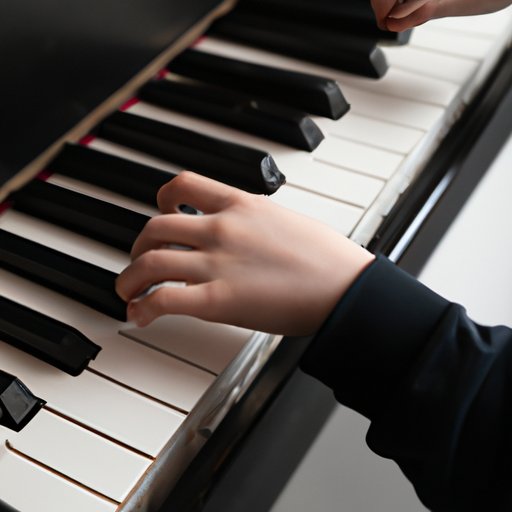
Introduction
The piano is one of the most popular instruments to learn, and for good reason. Playing the piano offers numerous benefits, such as improved dexterity, memory, and mental processing. In this article, we will guide you through the essential steps to learn how to play a piano, offer tips and tricks to improve your skills, and provide techniques and exercises for all levels of piano players.
10 Essential Steps for Beginners to Learn Piano: A Comprehensive Guide
Learning the basics is key to becoming a successful piano player. Here are 10 essential steps for beginners:
- Understanding the layout of the piano keys.
- Learning the musical alphabet.
- Mastering finger numbers and hand positioning.
- Developing proper posture and seating position.
- Practicing playing individual notes and chords.
- Moving on to playing simple songs and melodies.
- Practicing sight-reading and music theory.
- Learning to use the sustain pedal.
- Practicing improvisation and playing by ear.
- Continuing to challenge yourself with more complex music and techniques.
Mastering the Keys: Tips and Tricks for Piano Players of All Levels
Consistent practice is key to improving your piano playing skills. Here are some tips and tricks to help you:
- Keep your fingers curved and in a relaxed position.
- Use the weight of your arms to play the keys, rather than relying solely on your fingers.
- Practice playing the piano with your eyes closed to improve your muscle memory.
- Practice playing at a slow tempo before increasing your speed.
- Record yourself playing to listen for areas to improve.
The Art of Piano Playing: Techniques and Exercises to Improve Your Skills
Technique is essential to good piano playing. Here are some popular techniques to improve your skills:
- Dynamics: Varying the volume of your playing.
- Phrasing: Expressing musical ideas through subtle variations in the rhythm and tempo.
- Articulation: Emphasizing certain notes to bring out the melody.
- Fingering: Choosing the best fingers for playing a passage based on hand position and speed.
Here are some exercises to help improve these techniques:
- Practice scales and arpeggios to improve finger strength and speed.
- Use a metronome to practice keeping a steady tempo.
- Practice playing a song using different dynamics and phrasing to convey different moods.
Playing Piano Like a Pro: A Step-by-Step Tutorial for Beginners and Intermediates
Once you have the basics down, it’s time to move on to more advanced techniques:
- Polyrhythms: Playing multiple rhythms simultaneously.
- Cross-rhythms: Playing rhythms that overlap and create a complex pattern.
Here is a step-by-step tutorial on how to achieve these techniques:
- Use a metronome to keep a steady beat.
- Learn the rhythms you will be playing by themselves first, before combining them.
- Start by playing simpler polyrhythms, such as 2 against 3.
- Move on to more complex polyrhythms, such as 3 against 4.
- Practice cross-rhythms by breaking them down into separate rhythms and slowly combining them.
Transforming Your Piano Playing: Innovative Methods and Tools to Enhance Your Performance
It’s essential to constantly push yourself to improve your piano playing skills. Here are some innovative methods and tools to help you:
- Video record yourself playing to analyze areas to improve.
- Use apps and technology to help with sight-reading and music theory.
- Join a piano community or take lessons to get feedback and support from others.
Conclusion
Learning to play the piano can be a rewarding and enjoyable experience. With these essential steps, tips, and techniques, players of all levels can improve their skills and become proficient piano players. Remember to practice regularly and continue to challenge yourself to improve.




